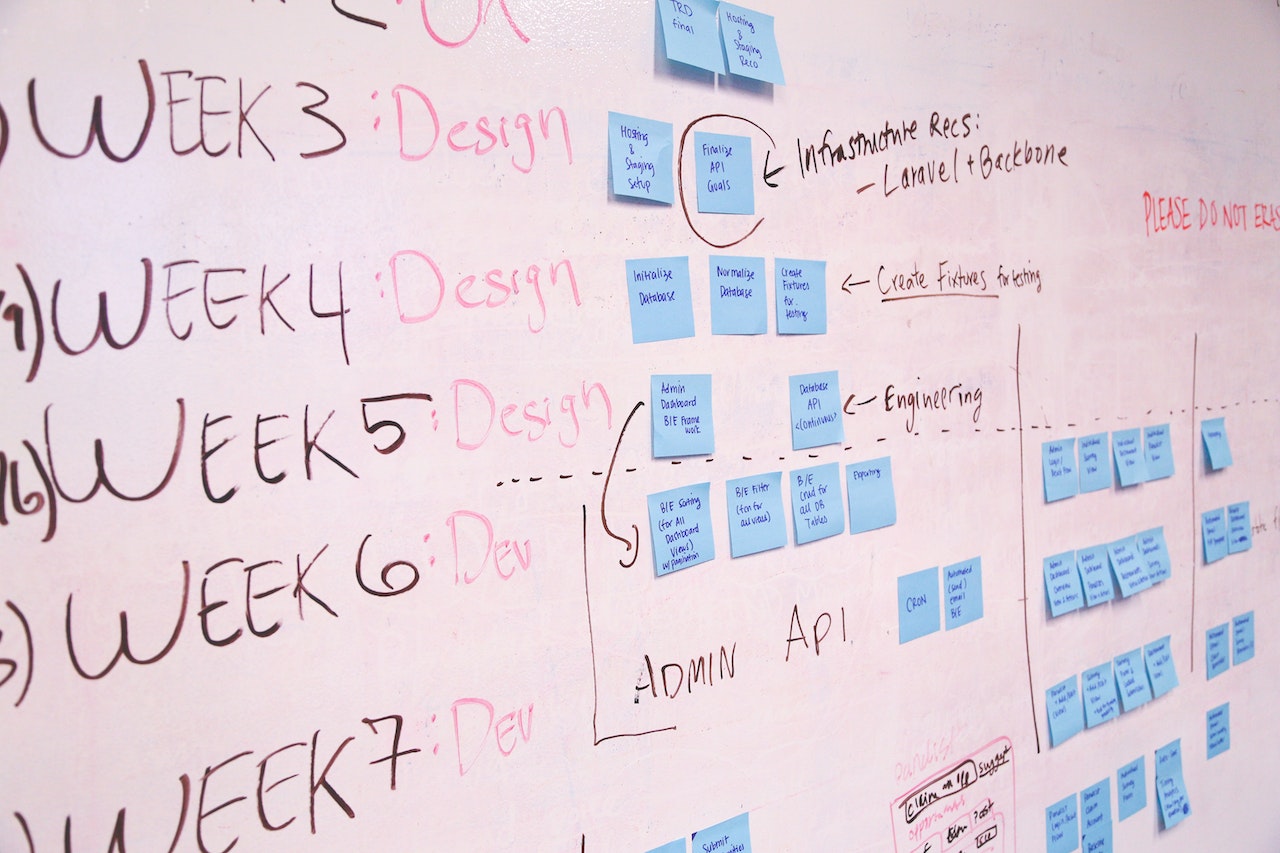The Software Development Life Cycle (SDLC) is a structured process designed for the creation of high-quality software at a low cost and within the shortest possible time. The major aim of the SDLC process is the production of premium quality software
products that meet and surpass the expectations of customers. The SDLC is based on a detailed plan with stages or phases, with each stage having its own process and deliverables.
So what are SDLC methodologies and some examples of software development life cycle models? SDLC methodologies are those processes and practices utilized by software development teams for the successful implementation of the SDLC.

The SDLC process is important for companies because adherence to it ensures easier project tracking and control, boosts development speed, reduces project risks, and minimizes the costs a company would have incurred if it adopted alternative software production methods, among many other benefits.
Types of SDLC Methodologies
Examples of software development life cycle models may include (but aren’t limited to):
1. Lean
The
Lean SDLC model focuses on undertaking only what is absolutely necessary at a particular time and thus forbids multitasking. The model also aims to identify opportunities to reduce waste at every stage of the SDLC process. This model is based on the following seven lean manufacturing principles:
The lean model is very similar to the Agile model, although there are significant differences between them. For instance, both models prioritize customer satisfaction differently. While Agile customer satisfaction is an outright priority based on a flexible process that allows project teams to quickly respond to stakeholder feedback throughout the SDLC process, customer satisfaction in the Lean framework is premised on curbing waste in order to ensure that customers are provided more overall value and hence more satisfaction.
2. Agile
Since its introduction in 2001, the Agile life cycle model has gradually evolved to presently become the software development industry’s mainstream methodology. The model has become so attractive that some companies adopt it for projects unrelated to software development or tech.
A lot of Agile teams adopt an Agile framework known as Scrum to help them organize development projects that are more complex in nature. Scrum teams usually segment their work into two to four-week periods known as sprints. Through daily Scrum meetings, all team members are able to continuously monitor their progress. The team leader, known as the Scrum Master, has the responsibility of making sure the team is always motivated and focused on achieving its goals.
3. Waterfall
Waterfall is the oldest of all the SDLC methodologies. It was introduced by US computer scientist Winston Royce in his 1970 paper titled “Managing the Development of Large Software Systems.” Royce seemed a bit skeptical about his idea when declaring, "I believe in this concept, but the implementation described above is risky and invites failure." But despite his skepticism, the Waterfall model became popular and remained the industry’s standard for more than two decades.
The idea behind the Waterfall method is simple: complete one stage, then proceed to the next. Once a stage has been completed and another has commenced, the team cannot go back to the completed stage. Each new phase has its own project plan and relies on information from the previous phase.
Despite its simplicity and usefulness, the Waterfall model has been criticized for its rigidity. Because it is resistant to revisions once a stage is concluded, problems cannot be addressed until the maintenance stage. It may not be the most suitable option when flexibility is needed or for ongoing, long-term projects.

4. Iterative
The Iterative methodology is based on iteration and incremental action. Rather than commence the project with fully known requirements, project teams start with a set of software requirements, then test, evaluate, and identify other requirements. Each iteration births a new version of the software.
The iterative process continues until the final output is ready. One advantage of this method over some other SDLC methodologies is the production of a working version of the product in the project’s early stages, when implementing changes may be less expensive. However, repetitive processes can consume resources at a faster rate.
5. DevOps
According to Amazon Web Services, “DevOps is the combination of cultural philosophies, practices, and tools that increase an organization’s ability to deliver applications and services at high velocity: evolving and improving products at a faster pace than organizations using traditional software development and infrastructure management processes. This speed enables organizations to better serve their customers and compete more effectively in the market.”
In a DevOps SDLC model, developers and operations teams collaborate closely or work as one team to quicken innovation and achieve the deployment of better quality and more reliable software products and functionalities.
The DevOps methodology is relatively new when compared with some other SDLC methodologies. A couple of trends led to its emergence. The first is the adoption of Agile and Lean practices for operations work, and the second is the observation of the value added by collaboration between development and operations teams at every phase of the SDLC process. In this model, product updates tend to be small but frequent. The model is also characterized by continuous feedback and process improvement, a high level of discipline, and the automation of manual development processes.
6. Spiral
Barry Boehm introduced the spiral model in his 1986 paper “A Spiral Model of Software Development and Enhancement.” The model ranks among the most flexible SDLC methodologies. Conceptually, it is strongly influenced by the Iterative model and its repetitive tendency. Its four phases (planning, risk analysis, engineering, and evaluation) are conducted in a figurative spiral that allows for multiple rounds of refinement until completed.
The Spiral model is usually adopted for large projects. The model helps development teams to create a highly customized product and allows for user feedback early in the project. It is also ideal for risk management since each iteration starts by trying to identify potential risks and the best ways to avoid or mitigate them.
7. V Shaped
The V-shaped model is a linear development model that is said to have originated from the Waterfall model but is more rigid than the latter. It is so called because of the two concepts that underpin it: validation and verification (which is why it is also known as the Verification and Validation model).
Requirements and designs are created in the verification stages. For every validation stage, there is a corresponding verification stage characterized by testing and user acceptance. Both the validation and verification stages are connected together by the implementation or coding stage
Like the Waterfall model, a stage begins only after the previous one is complete. The V-shaped SDLC model can be beneficial as long as your project does not have any unknown requirements.

8 Stages to Understand How SDLC Works
A clear understanding of SDLC frameworks demands some knowledge of the various stages involved. Though these stages tend to vary according to the type of SDLC framework (e.g., see the Spiral and V-shaped models above), some of them are highlighted below:
1. Planning Stage
Planning includes every aspect of project and
product management, such as capacity planning, cost estimation, resource allocation, project scheduling, and provisioning. It is in this stage that the development team gathers inputs from the projects stakeholders (which includes internal and external experts, customers, sales teams, and developers)
The inputs are then synthesized into a comprehensive definition of the requirements for building the software. The team then projects the resources that will be needed to prosecute the project requirements and then estimates the associated cost. This stage is also characterized by a clear definition of expectations, including the attributes desired in the proposed software and vice versa. The planning stage’s tangible deliverables include project plans, projected schedules, procurement needs, and estimated costs.
2. Coding Stage
The coding stage involves system design in an integrated development environment as well as static code analysis and code review for several device types.
3. Construction Stage
The construction or building stage leverages previously determined code requirements to commence the actual building of the software.
4. Testing Stage
Testing has to do with the evaluation of the built software. The testing team examines the developed product(s) to determine whether they meet the requirements stipulated in the planning stage.
The functional tests to be conducted include system testing, unit testing, integration testing, code quality testing, acceptance testing, performance testing, and security testing. Nonfunctional tests are also conducted.
If any problem is identified, developers are notified. Validated (actual) problems are rectified, and a new version of the software is subsequently built. To ensure that all tests are regularly and reliably conducted, automated testing and continuous integration tools are necessary.
5. Release Stage
The release stage includes packaging, deploying, and managing releases across a variety of environments.
6. Deployment Stage
In this stage, the software is formally deployed into the production environment. That is, the team delivers the final product to the end users in a live production environment. So, as soon as the product deploys, it is ready for customers to use
7. Operation Stage
This stage involves using the software in the production environment. Getting the right outcomes in the operation stage is about ensuring that all user interactions are considered. That implies making sure that the system is stable and performing. You know promptly when it isn't, and you can make the desired corrections when needed.
8. Monitoring Stage
The monitoring or maintenance stage is when the various elements of the software are monitored and maintained if necessary. These could include the overall system performance, user experience, new security vulnerabilities, and analysis of errors or bugs in the system.

Boost Your Project Manager Skills
To wrap up, recall that the major aim of using software development life cycle models is the production of top-class software that satisfies and exceeds the expectations or demands of customers. SDLC frameworks are based on a detailed plan with stages or phases, with each stage having its own process and deliverables.
SDLC is essential for businesses because adopting it can confer a host of advantages, such as easier project tracking and control, greater development speed, minimal project risks, lower costs than alternative software production methods, and more.
To discover more and go deeper on these various project management methods, checkout a few courses on Maven:
By the time you conclude your training with Maven, you’ll have acquired the extensive knowledge and skills that will make you a thought leader and influencer in your industry. So no need for further delays. Go to Maven.com now and take just a few seconds of your time to complete the simple sign-up process.







